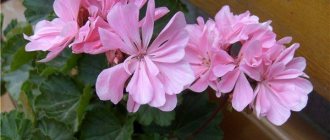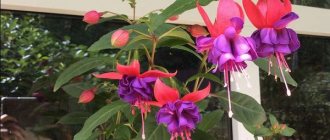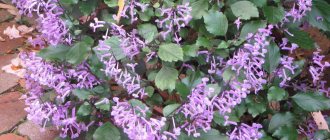Magnolia is an evergreen (deciduous) plant. The flowers are very fragrant, white, pink or cream in color with large leaves. The flower is a poisonous plant, but contains a lot of useful substances: essential oils, flavone glycosides, rutins and alkaloids. Growing magnolia flowers at home has been gaining popularity in recent years. There are ornamental species bred specifically for home cultivation.
Is it possible to grow magnolia in an apartment or at home?
There are several types of magnolia bred specifically for growing in pots at home. They are characterized by their small size, bright leaves and colorful blooms.
Important! Magnolia flowers, which have a pronounced aroma, can cause an allergy attack. Therefore, before growing, you need to make sure that no one in your household is allergic to the plant.
How an indoor magnolia flower blooms
In its natural habitat, magnolia blooms throughout the growing season. When flowering ends, the petals fall and this phenomenon is called “magnolia rain”. Then, in place of the previous flowers, fruits with large seeds are formed, similar in appearance to a pine cone.
Under favorable conditions, magnolias bloom for the first time 8 years after planting, and some species even earlier.
The colors of the flowers are varied: white, pink, lilac, purple. There are species that first form flowers and then leaves, and some bloom with leaves already present.
Important! It is not recommended to stay near a magnolia for a long time, as there is a high probability of headaches.
A photo of a magnolia flower grown at home is presented below.
A photo of a blooming magnolia in a pot proves that the seedling can be grown at home.
2.Varieties:
2.1. Magnolia star or stellata - Magnolia stellata
Multi-stemmed shrubs or small flowering trees with a height of 4.5 to 6 m. This magnolia blooms in the spring months and buds often appear even before the leaves. The leaf blades are dark green, elliptical, 5 to 10 cm long. The flowers are slightly fragrant, white or pink, 7 to 10 cm in diameter with narrow, long petals. Young shoots and leaves are covered with short, silvery, attractive pubescence.
2.2.Grandiflora magnolia - Magnolia grandiflora
In their natural habitat, these are evergreen trees ranging from 25 to 35 m in height with a luxurious, dense, spreading crown. The branches are thin, flexible, abundantly branched. The leaves are simple, glossy, dark green, lanceolate, slightly bent along the central vein. The leaf blades reach a length of 20 cm. The flowers are attractive, large - up to 30 cm in diameter, with white, thick, rounded petals. During the flowering period, the plants emit a fairly strong but very pleasant aroma.
2.3.Magnolia kobus - Magnolia kobus
Trees with a spreading crown up to 10 m high, with abundant and early flowering. White, fragrant, attractive flowers up to 10 cm in diameter often appear even before the leaves. The leaves are dark green, oblong-lanceolate, 8 to 15 cm long with a glossy surface. The leaves are arranged alternately. In the autumn months, before leaf fall, the leaf blades turn yellow.
2.4. Magnolia Sieboldii - Magnolia sieboldii
Dense, multi-stemmed shrubs or small trees from 3 to 10 m high. The leaves are green, broadly lanceolate, matte, on short petioles. The leaf blades reach a length of 7–15 cm and turn golden yellow in autumn. The flowers are large, cup-shaped, up to 10 cm in diameter, with white, round petals and a rather intense aroma.
2.5. Loebner's magnolia - Magnolia loebneri
Early and abundantly flowering shrubs or small trees, which in their natural habitat reach a height of 6 m. The flowers are bright, pink, with long, narrow petals, fragrant, appearing even before the leaves. The leaves are lanceolate, glossy, green. Leaf blades are entire.
2.6.Magnolia liliiflora
Flowering shrub or small tree up to 4 m high. Abundantly branching shoots form a rounded crown. The leaves are green, lanceolate, entire, glossy, often appearing as the flowers fade. Leaf blades can reach 20 cm in length and 10 cm in width. The flowers are bright, pinkish or lilac in color with oblong petals up to 10 cm long. During the flowering period, the plants emit a pleasant aroma.
2.7. Brooklyn Magnolia “Yellow Bird” - Magnolia × brooklynensis Yellow Bird
In nature, these are large, flowering trees with a height of 6 to 12 m. Flowering is abundant and early - attractive golden-yellow, fragrant flowers often appear on bare branches. The leaves develop as the buds fade. The leaf blades are narrow, lanceolate, up to 25 cm long, with a glossy, dark green surface. The flowers reach a diameter of 7 cm and often remain half-open. In the autumn months, the leaf blades turn golden brown.
2.8.Magnolia obovate - Magnolia obovata
Spectacular flowering trees with a dense, spreading crown, height from 15 to 30 m. The leaves are simple, broadly lanceolate, dark green, on short petioles, collected in whorls. Leaf blades are entire. The flowers are fragrant, cream or white, sometimes pink, cupped, and open in summer. Flower petals are oblong, thick, waxy. During the flowering period, the plants emit a very pleasant aroma.
2.9.Virginian magnolia - Magnolia virginiana
Spreading shrubs or trees with a height of 3 to 12 m. Depending on the climate, plants can be evergreen or deciduous. The leaves are narrow, lanceolate, entire, dark green, glossy. The leaf blades may be slightly bent along the central vein. The leaves are arranged alternately and reach a length of 6 - 12 cm. The flowers are cup-shaped, cream or white, up to 15 cm in diameter, and have a very strong sweet aroma.
2.10.Magnolia acuminata
A large tree up to 15 - 20 cm high. Abundantly branched branches form a pyramidal crown of plants. The leaves are simple, lanceolate, up to 25 cm long, arranged alternately. The upper surface of the leaf blades is dark green, glossy. The lower surface is painted in a lighter shade and covered with slight pubescence. The flowers are solitary, appear in late spring on the tops of shoots, and are colored greenish-yellow. After flowering, the plants form bright pinkish-red fruits.
2.11. Tripetal magnolia - Magnolia tripetala
A small flowering plant with a height of 4.5 to 9 m. The branches are thin, flexible, covered with glossy burgundy bark. The leaves are dark green, oblong-lanceolate, entire, reach a length of 30-50 cm, collected in whorls. In late spring - early summer, plants form very large, attractive flowers, reaching 15 - 25 cm in diameter, with a very unpleasant odor.
2.12.Large-leaved magnolia - Magnolia macrophylla
Flowering trees are from 9 to 12 m high. The leaves are green, soft, simple, broadly lanceolate, reaching a length of 70 cm. The lower surface of the leaf blades is painted in a lighter shade. The leaves are collected in whorls or arranged alternately. The flowers are large, white or cream, reach 30 cm in diameter and have a pleasant aroma.
You might also be interested in:
Under what conditions does the home magnolia flower grow?
The indoor magnolia flower prefers sunny, well-lit places, but can grow in partial shade.
While the plant is small, it is placed on a window located in the east, since the south side is too bright and burns may occur. Mature plants with a wide crown are placed on a stand near the window.
Advice! You should not hide magnolia deep into the room - this can weaken the plant and impair flowering.
Indoor magnolia (pictured) prefers fresh air and in summer it is better to take it outside.
Magnolias in the apartment are comfortable at a temperature of +20÷24 °C. But in winter, in order for flower buds to form, it is moved to a room where the air temperature is no higher than + 15° and no lower than + 7° and there are no drafts.
Distribution across the planet
The peoples of Japan and China have beautiful romantic legends about how magnolia appeared.
According to the official version, the French botanist Charles Plumier brought magnolia seeds to Europe and in 1703 named this plant after his colleague Professor Pierre Magnol. The extraordinary beauty of the tropical tree and the fragrance of huge lily-like flowers captivated the European nobility. And magnolia grandiflora spread throughout the countries of Europe and Asia in a short time.
Since 1734, Magnolia grandiflora has been grown in gardens as a cultivated plant. Magnolia grandiflora first appeared in Russia in 1817. Scientists at the Nikitsky Botanical Garden have been acclimating this heat-loving beauty to our climate for about 40 years. Today it adorns the streets of Georgia, Central Asia, the Astrakhan region, the embankments of Crimea and the Krasnodar Territory.
Types of magnolia for growing at home
To grow home magnolia, breeders have developed the following varieties:
- Brackens Brown Beauty;
- Figo;
- Coco;
- George Henry Kern;
- Daphne.
Also, some amateur flower growers grow the following varieties at home: Sulanja Lenny, Little Jam, Sensation.
Brackens Brown Beauty
An evergreen, broad-leaved shrub with large, oval, dark green leaves. The outer side of the leaves is smooth, and the reverse side is covered with a small brownish fluff. The flowers are white with a pleasant aroma.
Figo
An ideal variety for home growing. An adult shrub grows up to 1.5 m in height.
The flowers of the Figo variety are small (up to 4 cm in diameter), cream, white, yellow or lilac in color, with a pungent aroma, which is especially noticeable early in the morning. The aroma is reminiscent of the smell of a banana, for which the shrub is often called the “banana tree”. The leaves are green, oblong in shape.
It is preferable to plant in slightly acidic, well-drained soil with plenty of organic amendments. The shrub can grow in both sun and partial shade. Bushes grown in conditions of periodic shading are loose and spreading, while in the sun they are compact and dense. The culture loves moderate watering and does not tolerate transplantation.
Coco
The variety is actively grown at home. The leaves are wide, green or dark green, pointed at the apex and wedge-shaped at the base. The flowers are white, cream-colored with a delicate aroma.
George Henry Kern
Slow-growing (15 cm per year), deciduous, hybrid shrub with a spherical crown. Characterized by abundant flowering and frost resistance.
The flowers are purple on the outside and white on the inside. Blooms before leaves appear. The foliage is dark green in summer and brownish-bronze in fall. Prefers partial shade and acidic to neutral soils.
Daphne
Low-growing shrub with late flowering. The flowers are bright yellow, up to 10 cm in diameter. The leaves are green, wide and medium in size.
Sulanja Lenny
The variety was bred at the beginning of the 19th century in France. A frost-resistant, slow-growing deciduous shrub reaches a height of about 3 m.
The leaves are large, green, and in autumn - from yellow to light brown. The flowers are large, white, shaped like tulips, and when fully bloomed, like lotus flowers. They have a strong aroma.
The shrub grows in sun and partial shade. Prefers black soil, acidic or slightly acidic soil.
Sensation
The variety begins to flower in the first years after planting. Grows up to 3 m in height and up to 1.5 m in width. The flowers are rich yellow in color, shaped like a tulip, up to 20 cm in diameter.
1.Seven secrets of success:
| 1. Growing temperature : summer - normal room temperature in the range of 18 - 24 ° C, winter - cool dormant period, stimulating subsequent flowering - air temperature 12 - 15 ° C. |
| 2. Lighting : light shading from direct sunlight on summer days, sunbathing in the morning and evening are necessary for the onset of abundant flowering. |
| 3. Watering and air humidity : keep the soil evenly moist, but not swampy in the warm season, reduce watering to a minimum in winter. Water the plants with well-settled or filtered water at room temperature. It is better to increase air humidity. |
| 4. Pruning : formative, after flowering, sanitary - removing diseased and weak branches - as necessary. |
| 5. Soil : grows well in very loose, well-permeable soils with slightly alkaline pH. |
| 6. Feeding : in spring and summer with organic or mineral fertilizers every 2 weeks, in autumn and winter no fertilizing is carried out. |
| 7. Reproduction : magnolia is propagated by seeds, cuttings, air layering and grafting. |
Botanical name : Magnolia.
Magnolia flower - family . Magnoliaceae.
Origin . North America.
Description . Magnolias are evergreen or deciduous, branching trees and shrubs with beautiful, large flowers. Many species, in addition to beautiful flowering, also have very attractive fruits. The leaves are oblong-lanceolate, green, leathery, 15–20 cm long. The leaf blades on the underside are painted in a lighter shade and have a delicate, velvety pubescence. The flowers are single, fragrant, white, lilac, pink or burgundy, about 8 - 20 cm in diameter, abundantly covering the plant.
Height . The plant reaches 6 m in nature.
How to grow magnolia at home
Caring for magnolia grown at home is quite easy; you must follow certain rules.
How to choose a pot for a magnolia flower
House magnolia is a low-growing shrub that requires growing in a spacious and deep flowerpot. This is a prerequisite for growing a plant that has a highly developed root system in the form of a rod.
Magnolia is also planted in tubs so that it is convenient to take it outside in the summer.
Preparing soil for growing magnolia at home
To grow home magnolia, you need light, nutritious soil with a sufficient content of organic substances in the form of peat and humus. Optimal soil acidity should be in the range from 7 to 7.5 units.
Landing algorithm
To prepare the soil, take turf soil, leaf humus, peat and manure in a ratio of 2:1:1:0.5. A drainage consisting of charcoal and moss is placed at the bottom of the pot. Carefully place the magnolia seedling and cover it with soil. Then the soil is compacted and watered abundantly. After this, the soil is fluffed up and mulched.
Content
- Description of magnolias
- Growing conditions, planting and care of magnolias Growing conditions
- How to plant. Preparation
- How to care
The gorgeous, absolutely evergreen grandiflora magnolia (magnolia grandiflora) is becoming relevant for the south of the Central Zone. From a distance it looks like a rhododendron or ficus, but with huge white flowers. Suitable for experienced gardeners who are not afraid to grow evergreen subtropical crops in cold climates.
Chupacabra Viranesque / Flickr.com
How to grow magnolia at home
Caring for indoor magnolia involves following certain growing rules.
During the growing season, it is better to water your home magnolia with rain or settled (filtered) water. The plant reacts poorly to chlorine and lime in tap water. Under no circumstances should moisture stagnate or the soil dry out.
During cold periods, the frequency of watering is reduced; moistening is carried out no earlier than the soil is half dry. After each watering, to maintain moisture, the soil is loosened and mulched, covered with bark or sawdust.
If the room has dry air, you can spray the plant with water, which will have a beneficial effect on the well-being of the magnolia, or place the pot on a tray with wet pebbles.
From the beginning of the growing season until the onset of autumn, magnolia is fed twice a month with special fertilizers. Fertilizing is also carried out in winter, but not more than once a month.
To form a beautiful shrub, you need to prune the plant at a young age. Pruning is carried out in early spring or after flowering has ended. In adult magnolias, only dry and weak shoots are removed, since in adulthood they react worse to pruning.
Home magnolia propagates in three ways:
- When propagated by seeds, the planting material is filled with water for three days, then the shell is removed from the seeds, washed thoroughly and treated with fungicides. Planted in a prepared container, it is advisable to choose a container with opening valves (for ventilation and creating a greenhouse effect) or covered with a piece of polyethylene. Place in a room with a temperature of +20÷25 °C. When the first shoots appear, the film is removed. When two leaves appear on the plant, it is transplanted to a permanent place. With the seed propagation method, the varietal characteristics of the plant are not preserved, so for ornamental plants it is better to use other methods of propagation;
- cuttings. A two-year-old semi-lignified cutting up to 20 cm long is separated from the bush, on which 2 leaves are left. The cuttings are treated with a root-forming preparation and planted in peat. The optimal temperature for cuttings is from 18 to 25 °C. Over the course of 8 weeks, the root system should form and the cuttings should be transplanted to a permanent location;
- layering. Place a container with prepared soil next to the magnolia and dig the lower part of the branch into it. Secure with a hairpin or wire. After two months, roots should appear, then the cuttings are separated from the mother plant.
Tuesday, August 12, 2014
Magnolia at home: caring for the miracle tree in the apartment
When I admired the large fragrant “water lilies” of this magnificent tree floating among the skies, I lamented why it is not grown in an apartment. But! It turned out to be an exotic magnolia
(Magnolia) are also classified as indoor plants. How does magnolia behave at home? Let's find out about it right now.
The method of growing in a tub has a number of advantages - especially for latitudes with a northern climate. This plant does not need to be wrapped for the winter - and there is no risk that it will freeze. But, as they say, each method has its drawbacks. The room for this blooming splendor should amaze with its breadth of scope. To maintain this tree (or shrub), you will need, rather, not a room - but a spacious winter garden or a huge hall with high ceilings.
In an ordinary apartment you can grow low-growing magnolias. Or very young specimens - in order to later move them to the territory “according to proportionality”.
But even small shrubs will require spacious flowerpots. Large pots are a prerequisite for growing this exotic plant.
But in general, this green friend. very unpretentious. He adapts quite well to home conditions. Thus, it tolerates dry air and can tolerate partial shade.
But for magnolia to grow successfully, it needs bright light. Even in the garden, it is recommended to plant it in a well-lit space. And in the apartment she needs to allocate the brightest place under the sun.
This spectacular plant should only be replanted using the transshipment method - after all, it has a sensitive root system that is easy to disturb
.
Also in the summer it will require abundant watering. In this case, the water should be soft and settled. Like most of our green pets, this representative of the flora reacts poorly to lime. In winter, when the air temperature drops, irrigation will have to be reduced slightly. But if the room is warm and light, you should also water generously.
Another important condition is fertilizing with fertilizer 2 times a month during the growing season and protection from drafts in winter.
That's all the wisdom. In essence, the conditions for this exotic plant are almost the same as for most domestic plants.
And for those who think that this beauty is useless, it will be interesting to know: large-flowered magnolia (Magnolia grandiflora) is a medicinal plant. In particular, an infusion of its leaves is used to lower blood pressure and treat heart disease.
It is also a big myth that all magnolias shed their leaves. There are also evergreen species that are suitable for those who are sad to look at a bare trunk in the apartment in winter.
Frequency and rules of transplantation
Early spring before flowering is the most favorable time to transplant magnolia growing at home in a pot.
The pot should be wide and spacious, since magnolia has a powerful root system. The plant does not tolerate full transplantation, so it is replanted, leaving soil on the roots. Drainage must be placed at the bottom of the pot.
The replanting process is carried out every year, using a pot with a diameter 10 cm larger than the previous one.
An adult home magnolia is large in size and replanting becomes difficult, so once a year the top layer is changed by adding fresh substrate.
In order not to disturb the root system of an adult plant, the transshipment method is used when replanting.
Indoor magnolia - subtleties of caring for a potted plant
In general, “home” magnolia is an unpretentious plant, because, unlike garden crops, it has more comfortable conditions.
All that remains is to support them and regularly carry out simple procedures:
- In spring and summer, water the bush abundantly using soft rainwater. Moisture stagnation should not be allowed. In cool winter conditions, the frequency of watering should be reduced. The next watering is carried out no earlier than the earthen ball is half dry.
- After each watering, carefully loosen the soil with a stick or mulch.
- Spray the crown periodically.
- From spring to early autumn, feed the bush 2 times a month. Special fertilizers for acidophilic plants (azaleas, rhododendrons, magnolias) are suitable. Feeding can be carried out in winter, but not more than once a month.
- Since magnolia does not tolerate transplantation well, this procedure should be carried out only when necessary. When the young bush “grows” out of its pot, it needs to be transferred to a larger container. For large specimens, it is better to simply update the top layer of soil.
- In order for the bushes to grow beautiful and lush, they need to be pruned at a young age. It is better to do this in the spring or after flowering has ended. In adult magnolias, it is enough to simply remove dry and weak shoots. In adulthood, they tolerate haircuts less well.
If desired, it is easy to propagate indoor magnolia using cuttings.
Pests and diseases
Due to the inexperience of flower growers, the following diseases may appear in home magnolia:
- If fertilizers are applied excessively, the plant’s growth stops and the salinity of the soil around the plant increases, and the leaves dry out. In order to fix everything, water the seedling generously with warm water once a week.
- If there is too much lime in the soil, the roots and leaves become sick. The pathology is called chlorosis. To eliminate the problem, change the soil under the plant.
- In hot weather, magnolia can be attacked by spider mites. To combat it, the plant and soil are sprayed with Actellik.
- Magnolia can develop spotting, which is fungal in nature. For treatment, copper-containing preparations are used, for example, copper sulfate or Bordeaux mixture.
- Young, frozen shoots may suffer from gray rot. For treatment, drugs based on bacteria are used, for example, Fitosporin or Baktofit.
- Another disease is powdery mildew. Sulfur preparations, for example, Thiovit, are used for treatment.
- If there are small round spots on the leaves, this is black spotting, which is caused by phytopathogenic fungi. The drug Skor is used for treatment.
Magnolia grandiflora
Magnolia grandiflora is naturally distributed in the southeastern United States, growing in swampy, wooded lowlands and along muddy river banks. The estimated age of magnolia is more than 100 million years. The flowers and plant-pollinating beetles have been found in dinosaur fossils in areas of North America and Asia.
In a favorable warm and humid climate, this evergreen tree reaches a height of 45 meters.
Pharmacological use of Magnolia grandiflora
The leaves and flowers of this plant contain about 2% magnoline alkaloid, which has a powerful hypotensive effect on the human cardiovascular system. Official medicine uses the liquid extract of Extractum Magnoliae grandiflorae fluidum to permanently lower blood pressure for a long time. Due to the adrenolytic and hypotensive properties of the leaves and flowers of Magnolia grandiflora, this plant is considered poisonous, and any drugs based on it are taken strictly as directed and under the supervision of a doctor.
Chinese healers recommend drops and tinctures of Magnolia grandiflora for the treatment of runny nose and other respiratory diseases, diseases of the gastrointestinal tract (dysentery, vomiting, nausea, diarrhea, flatulence), fever and malaria.











